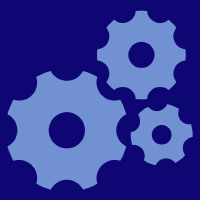Topic Editors


Smart Production in Terms of Industry 4.0 and 5.0
Topic Information
Dear Colleagues,
This Topic is dedicated to the fourth and fifth industrial revolutions and aims to promote new intelligent technologies, artificial intelligence and machine learning methods in the fields of materials, manufacturing, enterprise/factory and even maintenance to make them smart. New mechatronic concepts of Cyber Physical Systems (CPSs) connected in the dimension of the Internet of Things (IoT) for production lines, machines, operators, robots, tools and other equipment are promoted. One of the dimensions of the fourth industrial revolution is the advanced combination of virtual and real tools and tests to improve the efficiency of modern engineering science. Standards for integration, communication and interaction between CPSs of robots, humans and machines are strongly needed to bridge the gap between theory and practice. Network connections between CPSs and physical systems are characterized by a new level of awareness of their process capabilities, including various objectives such as production lead times, production on time, customized products, higher production control, increased product quality, equipment reliability and availability, and more. Papers presenting new manufacturing paradigms, including smart connections, data-to-information conversion, cyber, cognition and configuration levels are welcome. Other aspects of Industry 4.0 are Big Data processing, cloud computing, blockchain technology, etc. Models of sensor data integration with CPS should be developed, with the need to periodically query the controlled sensor network and process the received data in real time. Moreover, analysis based on historical data must be synchronized with real-time conditions of machines, robots, devices and workers to enhance the capabilities of the physical and virtual world. For each domain of a manufacturing process, models of edge computing and knowledge acquisition are needed at a specific moment and for a censored time interval.
For this Topic, we invite you to submit original papers and reviews of the struggles of scientists and practitioners in the fields of Industry 4.0 and 5.0. We encourage you to publish studies containing the results of conceptual work and laboratory and real-object tests to present issues including the use of smart connections, data-to-information conversion, cyber, cognition and configuration levels and more.
Dr. Iwona Paprocka
Dr. Cezary Grabowik
Dr. Jozef Husar
Topic Editors
Keywords
- reverse engineering
- additive manufacturing
- digital twins
- human–robot collaboration
- predictive maintenance
- virtual, augmented and mixed reality in production
- production process automation and simulation
- machine learning
- production planning and scheduling
- artificial intelligence in production and material processing
- smart materials and their application
Participating Journals
| Journal Name | Impact Factor | CiteScore | Launched Year | First Decision (median) | APC | |
|---|---|---|---|---|---|---|

Applied Sciences
|
2.7 | 4.5 | 2011 | 16.9 Days | CHF 2400 | Submit |

Electronics
|
2.9 | 4.7 | 2012 | 15.6 Days | CHF 2400 | Submit |

IoT
|
- | 5.2 | 2020 | 23.3 Days | CHF 1200 | Submit |

Materials
|
3.4 | 5.2 | 2008 | 13.9 Days | CHF 2600 | Submit |

Robotics
|
3.7 | 5.9 | 2012 | 17.3 Days | CHF 1800 | Submit |

Sensors
|
3.9 | 6.8 | 2001 | 17 Days | CHF 2600 | Submit |

Machines
|
2.6 | 2.1 | 2013 | 15.6 Days | CHF 2400 | Submit |

MDPI Topics is cooperating with Preprints.org and has built a direct connection between MDPI journals and Preprints.org. Authors are encouraged to enjoy the benefits by posting a preprint at Preprints.org prior to publication:
- Immediately share your ideas ahead of publication and establish your research priority;
- Protect your idea from being stolen with this time-stamped preprint article;
- Enhance the exposure and impact of your research;
- Receive feedback from your peers in advance;
- Have it indexed in Web of Science (Preprint Citation Index), Google Scholar, Crossref, SHARE, PrePubMed, Scilit and Europe PMC.


